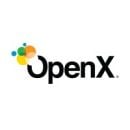The term “mission-driven” is often wielded as a badge of honor. But the lived experience of that mission separates the companies who truly mean it from those who rely on it for branding.
This alignment with purpose isn’t just a nicety; it significantly affects the employee experience.
According to recent data from Pew Research, half of workers said their job is enjoyable most of the time, while 47 percent said they find it fulfilling. Conversely, 29 percent of respondents said their roles were stressful, and 19 percent stated it was overwhelming.
Meanwhile, in Imperative’s 2022 Workforce Purpose Index, 44 percent of respondents indicated that they lack workplace relationships that add a sense of purpose to their work.
While professional relationships can provide a sense of purpose and fulfillment, a company’s mission is foundational to emanating these needs from one’s work.
A well-articulated and genuinely executed mission not only serves as a north star guiding business strategies, but also profoundly influences the well-being and satisfaction of its employees. In a world where many workers feel disconnected from their roles, a meaningful mission can bridge the gap, infusing everyday tasks with greater significance.
At OpenX, team members strive to create an open web founded on privacy and sustainability. At Skyryse, employees unify around the impactful goal of eliminating aviation fatalities through its platform.
While entirely distinct, these missions are clear-eyed, a source of inspiration and fulfillment.
Leaders from each company shared how they’re tackling these challenges and what jobseekers can look out for when deciphering whether a company is mission-driven — or just has a mission statement.
Skyryse’s operating system automates flight controls and management to mitigate human error, ensuring safety and security.
What is Skyryse’s mission? What problem are you solving in bigger and better ways?
Our company’s mission is to bring aviation fatalities to zero. We recognized that the fundamental technology to control vehicles used in general aviation today is outdated by about 60 years. To address this challenge, we are building a flight control platform from the ground up, incorporating modern technology that airlines worldwide have taken advantage of and adapting it for general aviation pilots. Building a new system from the ground up has resulted in a significant leap forward in safety, simplicity of use and overall capabilities for GA aircraft.
How does your mission help you and the business stay on track?
Our mission to improve safety in the aviation community keeps us on track by providing a clear focus and priority for our product development team. For instance, when designing new software features for pilots, we prioritize those that directly enhance aviation safety over other features. This mission inspires our team. We are building a product that will directly save lives, so we must stay focused and move quickly.
Our mission to improve safety in the aviation community keeps us on track by providing a clear focus and priority for our product development team.”
How can jobseekers cut through the fluff to determine whether a company has a mission worth supporting?
Job seekers should look for evidence of the company’s commitment to its mission by evaluating its focus on product development. They should ask, what is the product that the company is selling? Does it align with the company’s mission and my values?
OpenX is an independent supply-side platform that provides digital media companies with omnichannel programmatic advertising solutions.
What is OpenX’s mission? What problem are you solving in bigger and better ways?
OpenX’s mission is to create a world where the open web thrives sustainably.
We do this by facilitating a fair and transparent value exchange between publishers and advertisers. To promote this, we need the programmatic ecosystem to be sustainable.
This means two things: First, the ecosystem needs to evolve as we look toward a future without third-party cookies and other identifiers. Second, we must take responsibility as an industry for the carbon emissions programmatic advertising creates.
At OpenX, we don’t necessarily believe that bigger is always better. Our size as an independent supply-side platform provides us scale while allowing us to build innovative solutions that make a meaningful, positive impact on the health of the open web.
How does your mission help you and the business stay on track?
Innovation is at the core of everything we do — supply-side platforms have the opportunity to be more than a pipe and to deliver real solutions for advertisers and publishers; additionally, our identity pillars of addressability, transparency and sustainability keep us focused.
To create a more addressable open web, OpenX has established itself as a leader in building innovative solutions to help safely connect brands and agencies with their target audiences in publisher content they love, even when traditional identifiers like cookies aren’t available.
OpenX is uniquely positioned to make business choices, prioritizing quality and transparency over growth at all costs. As the inventors and patent-holders of header building, we have a history of building tools that improve the value exchange between buyers and publishers.
OpenX is uniquely positioned to make business choices, prioritizing quality and transparency over growth at all costs.”
OpenX has committed to having our greenhouse gas emissions measured and audited by independent third parties and we have publicly reported these emissions. Through these efforts, we became the first adtech company to achieve our Science Based Targets initiative Net-Zero goals and to be certified CarbonNeutral.
How can jobseekers cut through the fluff to determine whether a company has a mission worth supporting?
The first step is seeking out a mission that you truly support. Then, look for a company with a demonstrated record of trying to improve their industry. Fluff often supports the status quo, while mission-driven work is about delivering real solutions that impact the industry or community as a whole.
If a company is genuinely invested in its mission, there should be a record of it beyond its mission statement. For example, OpenX was recently one of the first companies to receive the TAG Certified for Transparency Seal, a recognition we received for the granular reporting and log-level data we provide buyers. Third-party verification provides legitimacy and can be a huge indicator as to whether a company’s mission is fluff or fact.
Lastly, I’d suggest researching or asking how long the company has been committed to its mission. While it’s perfectly acceptable for a company’s mission to shift over time, missions that evolve frequently may indicate a lack of consistent commitment. If a mission is important to you, look for articles, case studies or other evidence that the organization has been committed to the mission over time.









